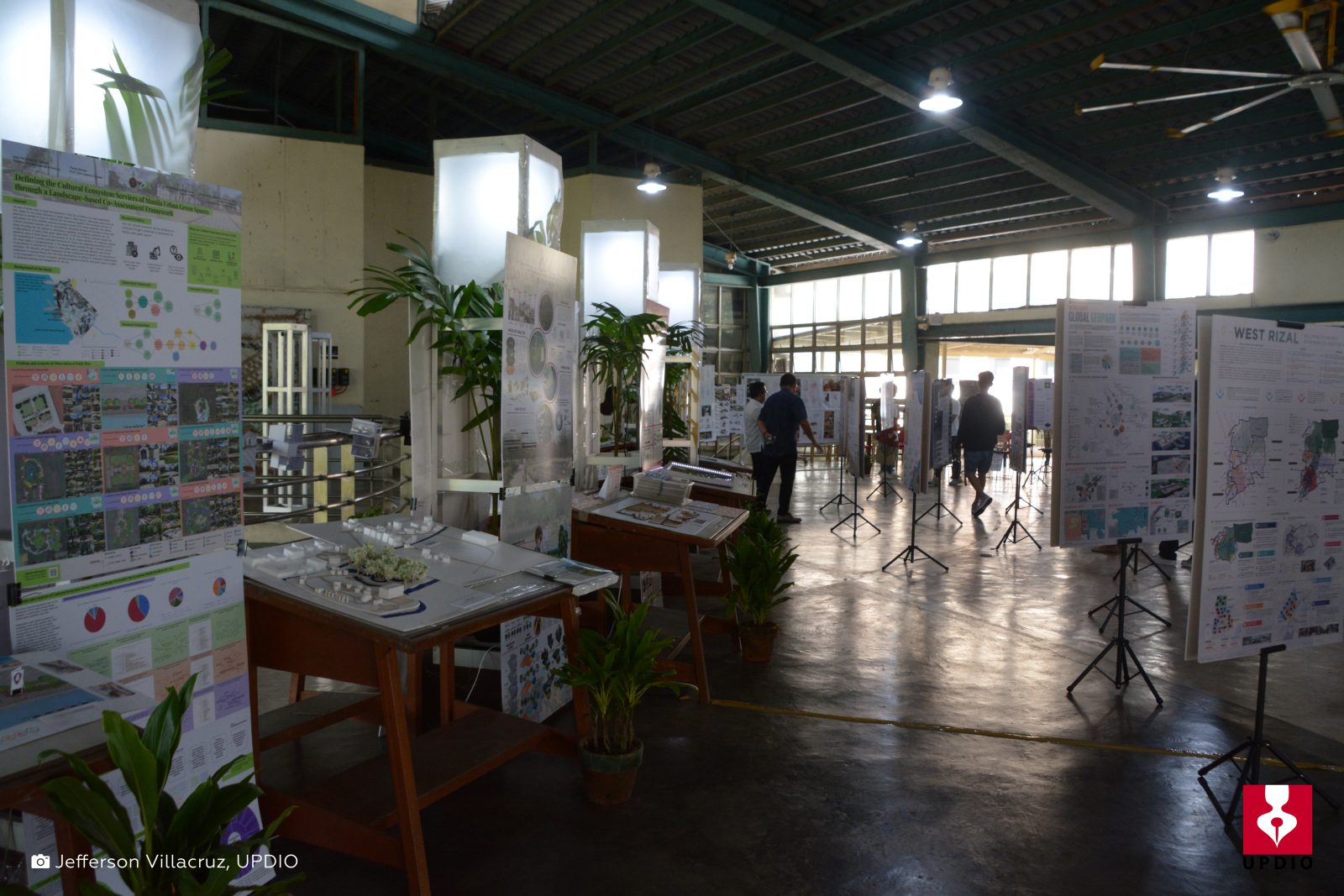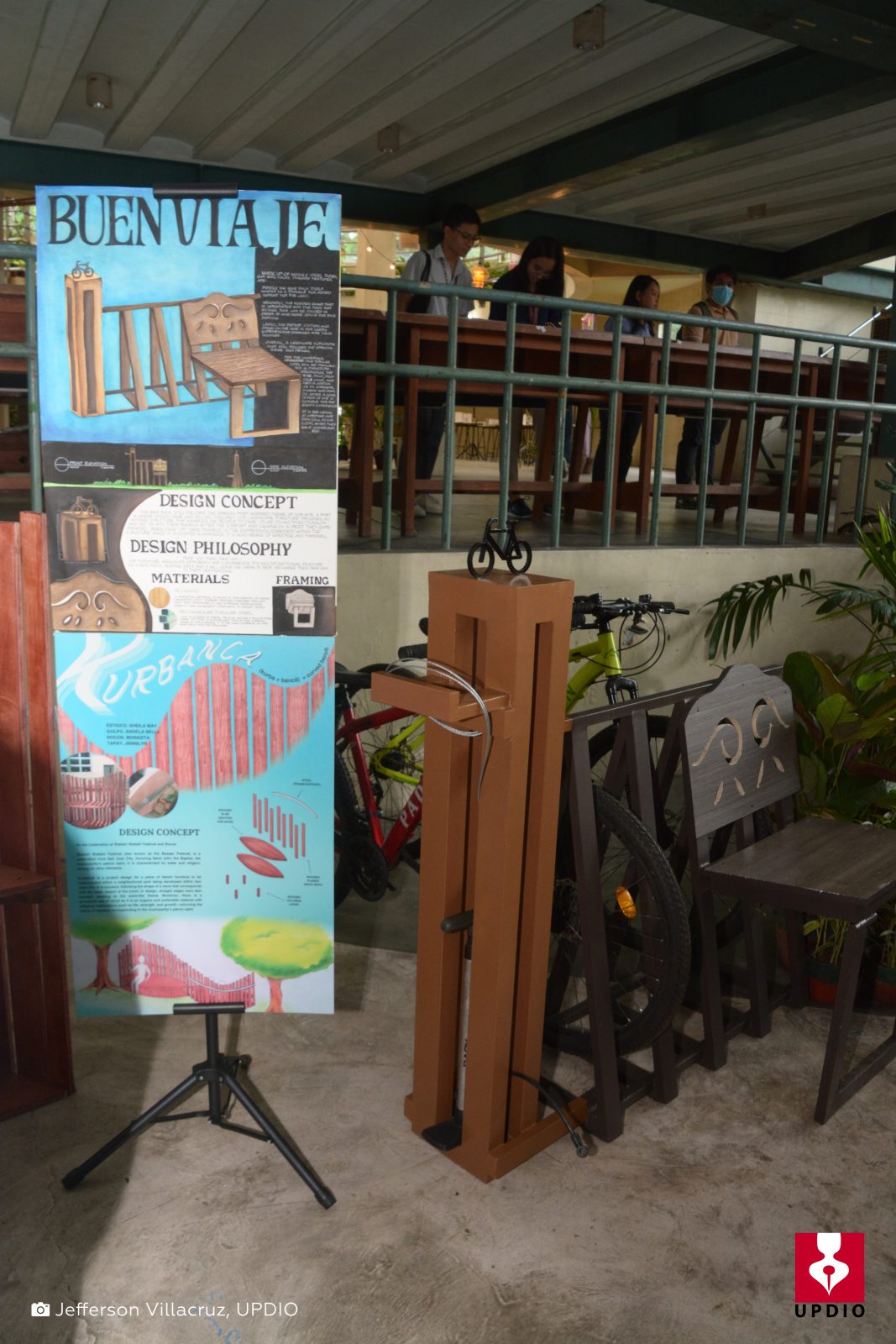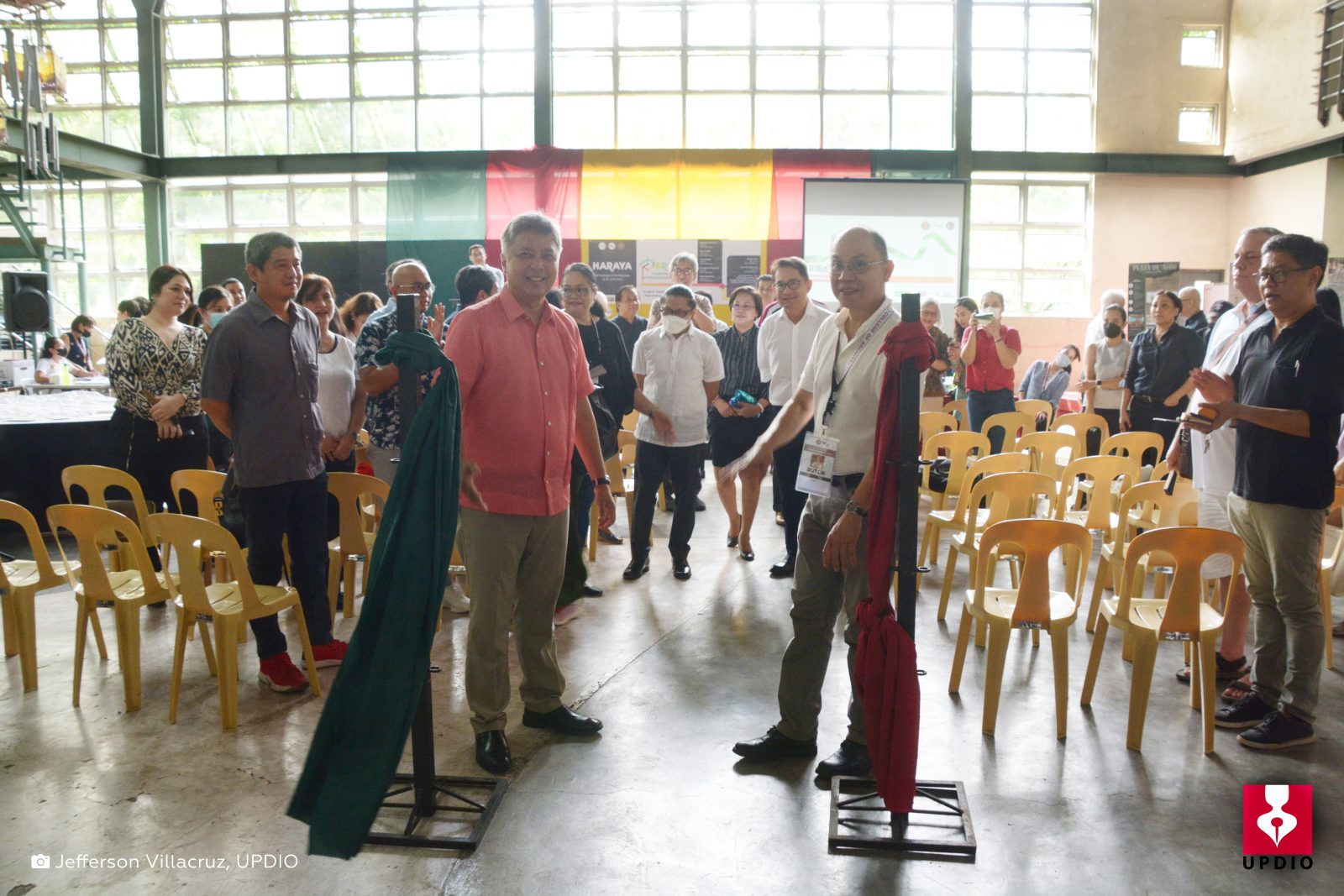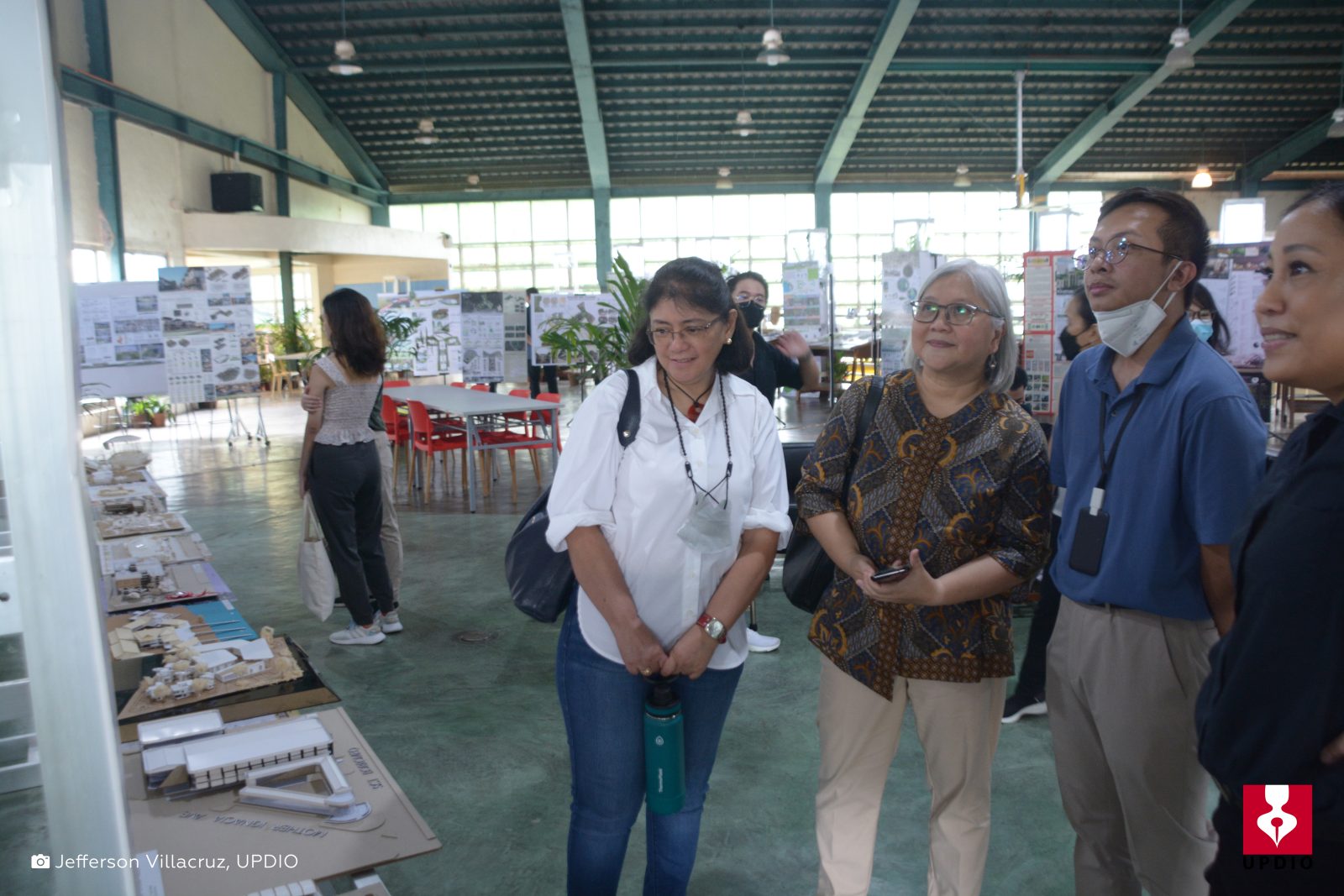For the first time in three years, the UP Diliman (UPD) College of Architecture (CA) celebrated its annual college week in person with the launch of Haraya 2023 on June 13 at the CA Building 1.
Scheduled were exhibits, workshops, and student awards culminating in a graduate research colloquium.

At the opening, the CA Building 1 was packed with faculty, staff, and students. Both of its floors were filled with a curated collection of projects, design drawings, renderings, physical models, and visual presentations created by the CA students. These were part of the exhibit Persona: Exploring Identity and Architecture.
The building’s underground floor featured works of the CA landscape architecture students while the top floor had exhibits of the architecture and graduate students.
In his opening remarks, CA Dean Luis Maria T. Bo-ot said Haraya had come a long way since it was first held in 2005 under then-dean Prosperidad C. Luis, PhD.
“Originally it was just an exhibit of student works accomplished during the past academic year. Over the years it has evolved. Today we will see a sprinkling of works from our master’s degree programs students,” he said.

One of the major events was an awarding ceremony for graduating architecture and landscape architecture students who took the best theses. Present to award the students were UPD Chancellor Edgardo Carlo L. Vistan II and Vice Chancellor for Administration Adeline A. Pacia, and their respective thesis advisers.
Among the graduating landscape architecture students, Leijh Hanne Alianza’s Memoryscapes in Recto-Spection: Envisioning Avenida, Recto, and Carriedo, Manila as Virtual Memoryscapes Through Immersive Mobile Technologies and Digital Heritage Interpretation garnered first place.
In second place was Hazel Grace Esmino’s ReCab: A Proposed Post-Rehabilitation Development for the Former Cabanatuan City Dumpsite Through Integrated Landscape Approach. Noemi Rye Rivera’s Sinking Sync: Identifying the Susceptible Sinking Islands Areas in the Delta Complex of Northern Manila Bay Using Remote Sensing Tool and Analytics Hierarchy Process won third place.
Among the graduating architecture students, Kyle Aguirre’s NURTURING INNOVATION: Bridging the Academia and the Public Through a Research Center for Artificial Intelligence won first place. Aguirre’s thesis adviser is Olivia Alma Sicam, an assistant professor of architecture at the CA.
Meanwhile, Darcey Lynn Ang’s EatsEasy: Reimagining the Food Experience Towards a Better Normal Through Streamlined Multi-Cloud Kitchen Facility and Michael Pio Dianzon’s POCKET HUB: A Net-Zero Energy, Mixed-use Community Hub landed in second and third place, respectively.

Other activities. An innovation for Haraya 2023 is the Design Clinic, an extension service initiative where members of the UPD community can avail of the CA faculty’s expertise through short consultation sessions related to architecture, landscape architecture, and construction services.
The Design Clinic was held from June 14 to 16, 10 a.m. to 12 p.m. and 2 to 4 p.m. at the consultation area of the upper ground floor of the CA Building 2.

Another week-long event for Haraya 2023 was Urban Sketching, a live on-campus activity where volunteer students and faculty sketched scenery around the UPD campus, the best of which will be for sale as part of the CA’s fundraising activities.
ARCo. The week was capped off by the Architectural Research Colloquium (ARCo) 2023: “Bantaaw: Seeing New Perspectives.”
ARCO is an annual academic venue for graduate students, faculty, and professionals to present their recent groundbreaking and innovative works in designed and built environments.
Held from June 16 to 17 at the UPD College of Science Administration Building Auditorium, it aimed to showcase the developments in architecture and landscape architecture, promote collaborative and/or interdisciplinary work, and pave for new approaches in looking at the disciplines.
This year’s theme, Bantaaw, is a Cebuano word meaning “clearly visible from a distance” or “commanding perspective.”
The colloquium is open to the public. Its participants were undergraduate students, graduate professionals, industry professionals, and academics from other higher education institutions.
